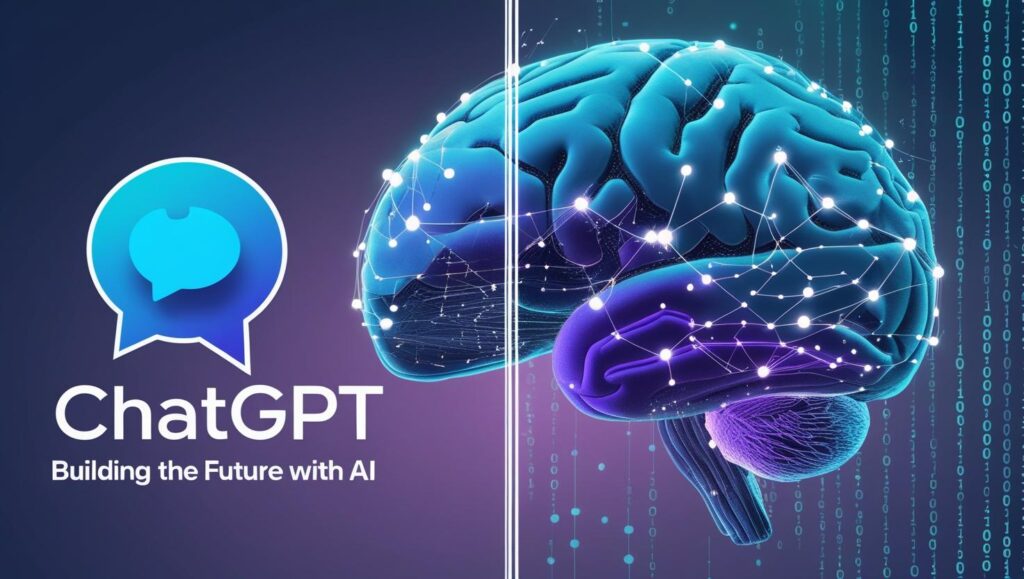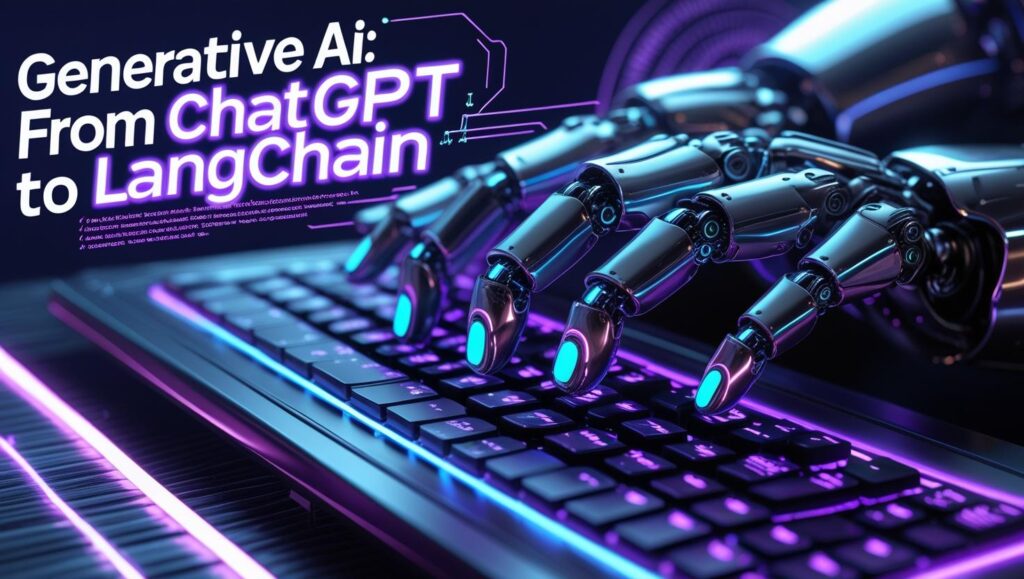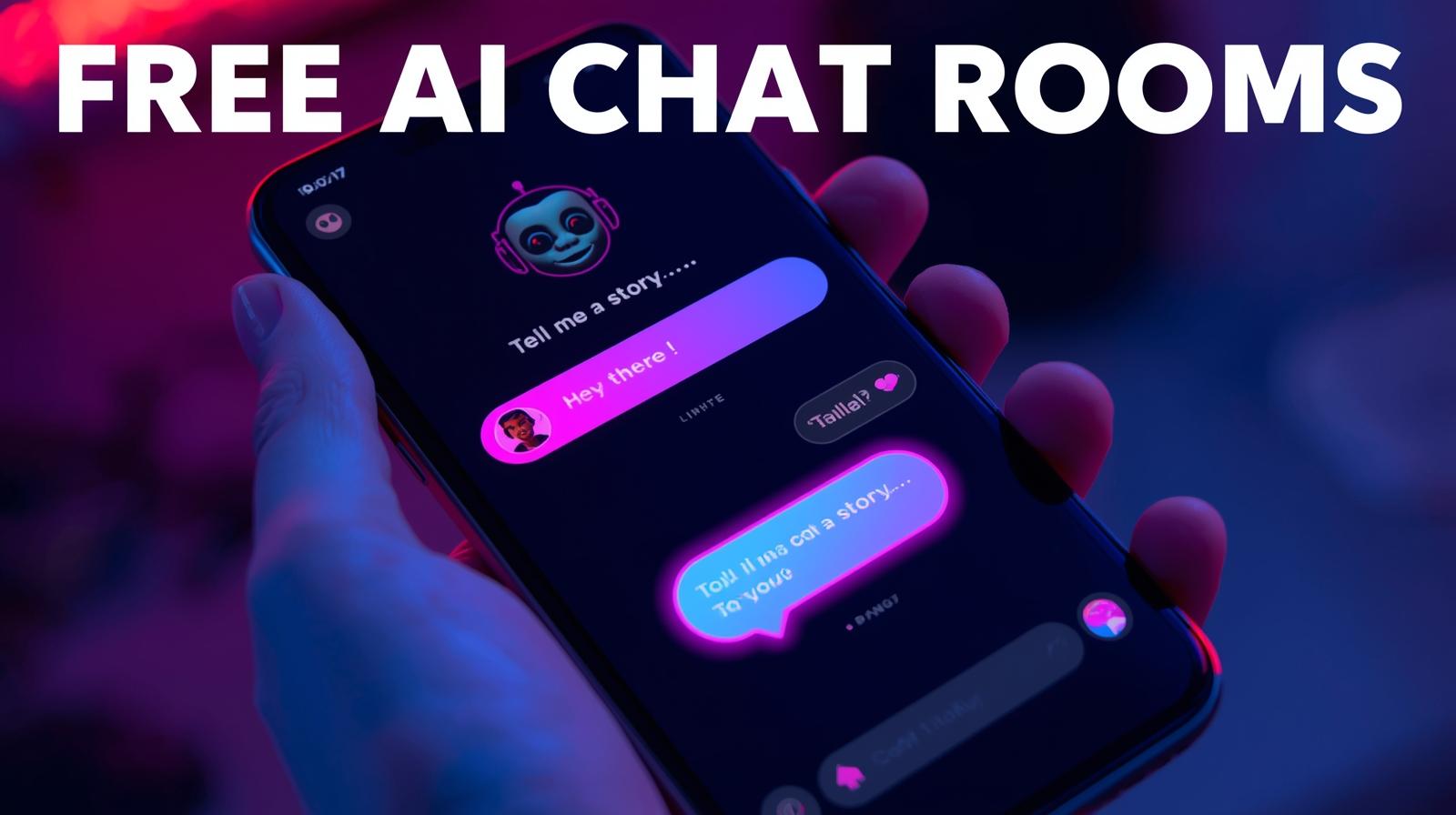Introduction to Generative AI
What is Generative AI?
Generative AI with ChatGPT and LangChain in Python is all about machines that can create new content—text, images, code, music—you name it. Imagine an AI that not only understands human language but can write stories, answer questions, or even code like a pro. That’s generative AI.
Why Generative AI Is a Big Deal Today
Because it’s transforming everything—from how we write emails to building complex automation systems. Tools like ChatGPT and LangChain are making it super easy for developers to integrate smart AI into apps with just a few lines of code.
The Building Blocks of Generative AI
Natural Language Processing (NLP)
NLP is the foundation. It’s how machines understand, process, and respond to human language. Think of it as the brain’s language center—but for AI.
Transformer Architecture: The Game-Changer
Remember when AI couldn’t hold a proper convo? That changed with transformers. Transformers like GPT-3 and GPT-4 can understand long contexts, generate coherent responses, and remember what was said before.
Language Models: GPT, BERT, and Beyond
- GPT (Generative Pre-trained Transformer): Great for text generation.
- BERT (Bidirectional Encoder Representations from Transformers): More about understanding than generating.
- These models laid the groundwork for the magic we now see in ChatGPT and LangChain.
Getting Started with ChatGPT
What is ChatGPT?
ChatGPT is a conversational AI built by OpenAI, powered by models like GPT-3.5 and GPT-4. It can chat, write, summarize, translate, and even code.
Core Capabilities of ChatGPT
- Contextual understanding
- Multilingual support
- Code generation
- Summarization and Q&A
Use Cases in Real Life
- Writing blog posts and emails
- Customer service chatbots
- Coding assistants
- Personal tutors
How to Use ChatGPT in Python
Setting Up OpenAI’s API
- Get an API key from OpenAI.
- Install the
openaiPython package:
bashCopyEditpip install openai
Example Code Snippet in Python
pythonCopyEditimport openai
openai.api_key = "your-api-key"
response = openai.ChatCompletion.create(
model="gpt-4",
messages=[{"role": "user", "content": "Explain LangChain in simple terms."}]
)
print(response['choices'][0]['message']['content'])
Limitations and Strengths of ChatGPT
What ChatGPT Can and Can’t Do
Pros:
- Super fast at generating text
- Great for brainstorming or prototyping
Cons:
- Not always factually accurate
- Doesn’t remember conversations across sessions
When to Use It—and When Not To
Use it for:
- Short-term tasks
- One-off queries
Avoid for:
- Long conversations that require memory
- Complex workflows with external tools
Enter LangChain: A Next-Level AI Framework
What Is LangChain?
LangChain is a Python framework designed to build advanced AI apps using LLMs (Large Language Models). Think of it as the glue between GPT and the rest of your app’s logic, tools, and data sources generative AI with ChatGPT and LangChain in Python.
Why LangChain is a Game-Changer for Python Developers
Because it:
- Supports tools and chains (multi-step logic)
- Allows memory and context tracking
- Integrates easily with APIs, databases, search engines, and more
ChatGPT vs. LangChain
Key Differences
| Feature | ChatGPT API | LangChain Framework |
|---|---|---|
| Output Quality | High | High |
| Context Handling | Limited | Extended (via memory) |
| Tool Use | Not native | Native support for tools |
| Workflow Logic | Manual | Built-in chains & agents |
When to Use One Over the Other
- Use ChatGPT for single-turn tasks and prototyping.
- Use LangChain for full-blown AI apps with memory and tool use.
Setting Up LangChain in Python
Installation Requirements
bashCopyEditpip install langchain openai
Simple LangChain App: Step-by-Step
Creating Your First LangChain Chain
pythonCopyEditfrom langchain.chat_models import ChatOpenAI
from langchain.chains import SimpleSequentialChain
from langchain.prompts import PromptTemplate
llm = ChatOpenAI(model_name="gpt-4", temperature=0.7)
prompt = PromptTemplate.from_template("Translate this to French: {text}")
chain = SimpleSequentialChain(llm=llm, prompt=prompt)
result = chain.run("How are you today?")
print(result)
Integrating with OpenAI’s GPT Models
LangChain uses the same OpenAI key, so no need to set up anything new beyond the usual openai.api_key.

Real-World Applications of LangChain
Autonomous Agents and Workflow Automation
LangChain enables multi-step reasoning and autonomous AI agents that can interact with external APIs, files, and tools.
Retrieval-Augmented Generation (RAG)
It lets you integrate external documents or data sources (like PDFs, websites, or vector databases) to enrich the AI’s responses.
Conversational Memory and Context Management
Unlike vanilla ChatGPT, LangChain offers built-in memory management, which allows your AI to “remember” past interactions.
Best Practices and Tips
Token Management
Be smart with token usage. Trimming unnecessary prompts or outputs can save costs and speed up responses.
Speed vs. Accuracy
More context = better answers, but also slower responses. Find the sweet spot that fits your use case.
Keeping API Costs Down
Use batching, caching, or even free local models for basic tasks to reduce API expenses.
The Future of Generative AI in Python
AI Agents and Autonomous Systems
We’re heading toward fully autonomous AI agents that can learn, reason, and act on their own. LangChain is already enabling some of this today.
Ethical and Responsible AI Use
As always, with great power comes great responsibility. Always build with transparency, safety, and privacy in mind.
Conclusion
From simple chatbots to full-blown autonomous agents, the journey from ChatGPT to LangChain in Python is both exciting and empowering. If you’re just starting out, stick with ChatGPT. But if you’re ready to build something smarter and more interactive—LangChain is the way to go. The best part? You don’t need to be a machine learning guru to get started.
FAQs
1. What’s the main difference between ChatGPT and LangChain?
ChatGPT is for generating text; LangChain is for building full AI apps with memory, tools, and more.
2. Can I use LangChain without OpenAI?
Yes! LangChain supports other models like Cohere, Hugging Face, and even local models like Llama.
3. Is LangChain beginner-friendly?
Absolutely. If you know basic Python, you can start building chains and agents right away.
4. Do I need a GPU to use LangChain?
Not necessarily. If you’re using OpenAI’s API, all the heavy lifting is done in the cloud.
5. What industries benefit most from LangChain?
Education, healthcare, fintech, e-commerce, and any domain needing smart automation or intelligent chat.



